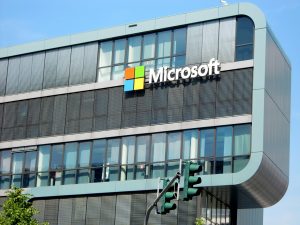Steve Ballmer officially departs Microsoft leadership with board resignation
![]() Six months after passing over the torch to Satya Nadella, former Microsoft Corp. CEO Steve Ballmer has announced his resignation from the board of directors with a heartfelt letter urging his successor to avoid making the same mistakes he did.
Six months after passing over the torch to Satya Nadella, former Microsoft Corp. CEO Steve Ballmer has announced his resignation from the board of directors with a heartfelt letter urging his successor to avoid making the same mistakes he did.
Hand picked by Bill Gates in 1980 as the then-emerging operating system maker’s first business manager, Ballmer evolved alongside Microsoft to become the legendary founder’s right-hand man. At the turn of the millennium, he finally took over the reigns from Gates, starting a 14-year tenure as CEO that would see Microsoft strengthen its grip of the consumer market and become a leading player in both the data center and the public cloud.
But Ballmer also made his fair share of mistakes. The attempt to provide a single platform for both computers and tablets with Windows 8 is largely considered a flop, as are many of the homegrown devices launched under his watch, from the Zune music player to the Surface RT. Along the way, the Redmond giant also lost the top spot in the browser wars to Google Inc., which continues to dominate its home search market despite the executive’s best efforts to establish Bing as a legitimate competitor.
Ballmer’s failure to keep Microsoft ahead of key trends such as mobility and search have set the company years behind the competition, creating gaping holes in its product portfolio that are now up to Nadella to fill. In his letter, Ballmer stressed the need for the recently appointed CEO “be bold and make big bets to succeed,” adding that software licenses alone won’t be enough to keep the company afloat.
The 34-year Microsoft veteran named “enterprise subscriptions” as one of the areas he believes Nadella will have to concentrate on in order to sustain Microsoft’s long-term competitiveness. That can be taken to mean not only the firm’s traditional on-premise solutions such as the Hyper-V virtualization platform but also – and mainly – its cloud services lineup, which has been publicly designated a top priority under the new leadership.
Ballmer pointed at “hardware gross margins and advertising revenue” as two other key factors in Microsoft’s future success. Nadella is not putting too big of an emphasis on digital ads in his efforts to create what he termed a “balanced monetization model,” but he is doubling down on hardware. In July, Microsoft revived the cloud-enabled storage platform it obtained as part of the acquisition of StorSimple Inc. in 2012 with two new arrays that enable admins to offload data to its Azure platform-as-a-service via the built-in interface.
Ballmer may no longer play an active part in directing Microsoft strategic roadmap, but he still has a seat at the table. As the former CEO diligently noted in his letter, he is currently the single largest independent stakeholder in the company, ahead of even Gates. Bloomberg pinned his cut at 333.3 million shares worth a grand total of about $15 billion as of Wednesday.
photo credit: jdlasica via photopin cc
A message from John Furrier, co-founder of SiliconANGLE:
Your vote of support is important to us and it helps us keep the content FREE.
One click below supports our mission to provide free, deep, and relevant content.
Join our community on YouTube
Join the community that includes more than 15,000 #CubeAlumni experts, including Amazon.com CEO Andy Jassy, Dell Technologies founder and CEO Michael Dell, Intel CEO Pat Gelsinger, and many more luminaries and experts.
THANK YOU













